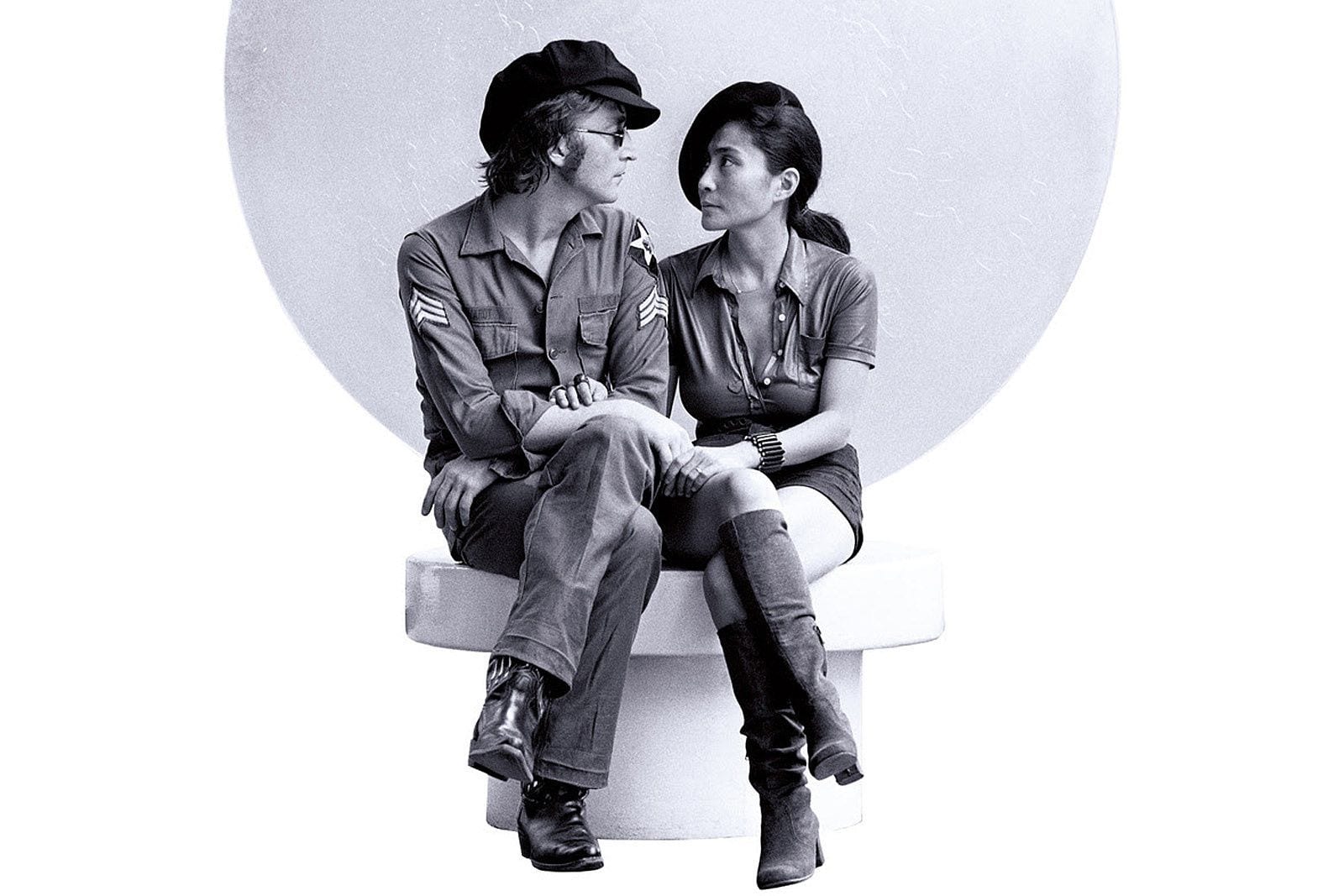
From the time they met through at least the mid 1970s, John Lennon and Yoko Ono fancied themselves avant-garde artists, creators, influencers, and public icons. They certainly had a case, and part of the evidence for that is Imagine, the “video album” the pair made to accompany John’s Imagine LP and Yoko’s Fly LP, both released in 1971. The film came out the following year and is being included on this revamped video edition along with Gimme Some Truth, Andrew Solt’s 2000 television documentary about the making of the Imagine album. It is all a part of Universal Music’s reissue blitz for Imagine, which was one of Lennon’s most commercially successful, critically-acclaimed solo works.
Imagine the film was somewhat groundbreaking for the time because it introduced what became a now-common format for such projects — music videos for each of the album’s songs (along with a few from Fly) interspersed with random bits of footage and abstract musical interludes. As for the videos themselves, they are culled from hours of footage that was shot at the Lennons’ home in Ascot, England as well as New York. As such, watching the dozen-plus clips feels like viewing different cuts of the same film, with a different soundtrack each time.
It is not a bad film, either. Interspersing artful shots, bucolic settings, and vérité moments, and making heavy use of jump cuts, Imagine helped lay the groundwork for tens of thousands of music videos that were to come. In creating a mood around the music and giving it an attention-grabbing visual accompaniment, it succeeds.
There is no narrative other than the implied statement of John and Yoko’s love for one another and desire to do everything together. There is a lot of the Lennons doing the things the Lennons do. They play chess, shoot pool, stroll around in the garden, play piano, participate in protests, and look at artwork. To further pronounce their membership in the artistic vanguard, they offer footage of them hanging out with Andy Warhol, Jack Nicholson, and Miles Davis.
Certainly, John and Yoko are photogenic and charismatic, and their cults of personality are almost tangibly evident in the footage. Nearly half a century on, they still look and seem like some of the coolest, deepest people one could hope to meet, while the obvious authenticity of their relationship produces a certain charm. A particularly striking moment comes in the form of interlude “What’s That in the Sky”, which features repeated shots of the Lennons walking through a doorway with the likes of George Harrison, Jonas Mekas, and Fred Astaire. There is something playful and remarkable about it.
For the most part, though, what is most remarkable about Imagine is the juxtaposition between the forward-thinking visuals and the music itself. While Imagine album is rightly regarded as a very-good-to-great one, nearly all the songwriting and music is about as traditional as one can get, even as the remastered sound lends even more lushness to Phil Spector’s production. With the exception of the sublime “Mrs. Lennon”, the presence of Ono’s experimental bits is only a distraction. John was trying desperately to make peace between his iconic stature and his desire to embrace domestic life and get back in touch with the rock ‘n’ roll he so dearly loved.
That tension is even more evident in Gimme Some Truth. Culled from extensive footing shot during the Imagine recording sessions and with no narrator, it gives a window, however narrow, on Lennon’s existence at the time. Some of the footage is the same as that in the Imagine film, but there are a few indelible moments. At the lunch table, Lennon declares he will print his lyrics on the album so fans can understand them, while noting Paul McCartney has not done so for his album. “Who wants to know all that?” an ever-bewildered Spector asks. Later, Lennon and Harrison joke tongue-in-cheek about their former band. The fly-on-the-wall shots of the recording sessions are sometimes fascinating, sometimes revealing Lennon to be short-tempered and condescending toward his crew and band. Yoko is everywhere, including in the studio, and if she really did “break up the Beatles”, there is one moment where she reveals just how she did it. After a take of “How Do You Sleep?”, she complains to John that the musicians (who are in the same room and include luminaries Harrison, Alan White and Nicky Hopkins) are playing too freely and sound “funky”. Lennon then dutifully berates them to tighten up.
The lasting impression is of the confused young man who shows up outside Lennon’s house, anxious to meet his idol and reveal the synchronization of their minds. Instead, Lennon gives him some hard truth, telling him there’s no way the songs could possibly be about him, whom Lennon has never met after all, and cautioning him, “Don’t confuse the songs with your own life”. When Lennon invites the heartbroken fan in for a bite to eat, it is with a tortured sort of pity, and it is clear that this is a man who, with all his complexities, has lived in a bubble for quite some time.
- Things Must Pass' vs. 'Plastic Ono Band'
- The Sentimental Journey of "Imagine" - PopMatters
- "Bring on the Lucie": Lennon's Last Overtly Political Stand
- John Lennon's 'Working Class Hero': Boundaries, Mobility and ...
- John Lennon and Paul McCartney: The Friendship Heard 'Round
- John Lennon's Minimalist Journey to Independence - PopMatters
- John Lennon's Minimalist Journey to Independence - PopMatters
- The Sentimental Journey of John Lennon's "Imagine" - PopMatters
- Revolutionary Man: John Lennon As Political Artist - PopMatters
- John Lennon 101: The Solo Discography - PopMatters


![Call for Papers: All Things Reconsidered [MUSIC] May-August 2024](https://www.popmatters.com/wp-content/uploads/2024/04/all-things-reconsidered-call-music-may-2024-720x380.jpg)



